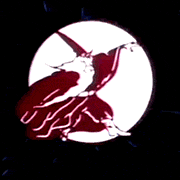|
Today I learned the underpinnings of modern kinetic theory thermodynamics were observations of a dull boring bar made by an 18th century aristocrat trying to prove intelligent design. https://en.m.wikipedia.org/wiki/An_Experimental_Enquiry_Concerning_the_Source_of_the_Heat_which_is_Excited_by_Friction
|
|
|
|

|
| # ? May 17, 2024 21:31 |
|
ryanrs posted:Welding Tools (besides the welder) Adding to the good recommendations for clamps etc, I'd highly recommend a combination square and protractor set, some long steel rules, a big try square or square, dykem and a scribe, paint pens, and a good measuring tape. Having a variety of layout and marking tools is super helpful to have on hand so you can start from accurate measurements and clear layout when you build things. I also thing a slotted table made of tube is pretty useful, or a table top with holes for plug clamps, or a bunch of magnets if you want a flat welding table. Being able to clamp stuff to the middle of the table is pretty key. A welding table is a fun and simple project to make out of tube, either with a tube top for slots running the length or a laser cut sheet top for a smooth top or with holes for plug clamps.
|
|
|
|

|
|
|
|
That's a screaming deal. The top is 183# alone.
|
|
|
|
I'd buy the poo poo out of that. 3x3 is a respectable work surface.
|
|
|
|
I have a question about G-code. I figured out two ways to mill a shape out of a piece, but I think they're inefficient. I'd like to know if there's a better/more efficient way of programming the depth. With method 1 I have to write a whole lot of code, with method 2 I give up easy control of the depth that I want to go to. If I wanted to make the depth of the cut -18.2 per example, method 2 would be a lot more involved. method 1 code:code:
|
|
|
|
Dance Officer posted:I have a question about G-code. I figured out two ways to mill a shape out of a piece, but I think they're inefficient. I'd like to know if there's a better/more efficient way of programming the depth. Does your gcode interpreter have conditionals and looping? I am not familiar with the dialect of gcode in your examples but I have done similar things by having variables set for x, y, and z extents. I would have a parameter to set the depth of cut which would be used to calculate the z heights to execute each iteration of the for loop. Essentially similar to your method 1 but with a for loop instead of explicit calls.
|
|
|
|
I honestly couldn't tell you if my interpreter has conditionals or looping, and I didn't know there were various dialects. I thought it a standardized programming language. What I can tell you is that I'm Dutch, and the program I use to write these programs is SL, which seems German. It has tons of options for different kinds of machines, the one I program for is a 25+ year old Heidenhain.
|
|
|
|
Dance Officer posted:I honestly couldn't tell you if my interpreter has conditionals or looping, and I didn't know there were various dialects. I thought it a standardized programming language. I am not familiar with Heidenhain controls but most control modern control systems have programming extensions. A control that is 25y old may not. Gcode is standardized as RS274 or ISO6983 and others but these standards are not a complete description of a real implementation. Every control out there has different extensions and meanings to the various codes. For example, in your code you used a G24 to describe a corner radius. In a Fanuc control, G24 does not exist and a corner radius would need to be described as G2/G3 moves. This is the reason for all of the different posts in your CAM software. Posts are control and machine specific and code generated for one machine can not be used on a different machine.
|
|
|
|
I'm glad I always had the ability to program the tool path in CAM and export for my machine. Just gotta dry run in wax first! I have modified g-code but if someone asked me to write it, like not using a conversational controller but sitting down and writing each move, I would probably go postal.
|
|
|
|
Every time I have had to hand write gcode I've found it easier to use excel or python to generate my point list instead of trying to use variables and subroutines and macros on the controller. I find having easy to read as it runs gcode is really nice when proofing parts you wrote yourself instead of trying to figure out what a variable is and what it means for the move in the next block. It makes longer and less tidy code on the machine but it's much more usable n
|
|
|
|
The only g-code writing I ever do is manually changing the position the gantry returns to at the end of the cut if I forget to set it in the CADCAM software, honestly--there is a dedicated CNC thread, though, and I know there're some more g-code saavy types than I in there. I have a question about melting and reforging metals--I'm kind of trying to rough out an outline for a story idea, and I was wondering if a relative amateur, say apprentice-level, took old tool parts, like hammer heads or big iron nails, etc, and melted them down to make something new (thinking a sword for now but not 100% that's what I want to go with) would there be any hints as to the metal's origins in the appearance of the finished metal? My impression was no, just because of the temperatures involved and fundamental chemistry of sorts, but most of my material expertise is with woods and acrylics, which are by nature totally different beasts.
|
|
|
|
|
Trebuchet King posted:I have a question about melting and reforging metals--I'm kind of trying to rough out an outline for a story idea, and I was wondering if a relative amateur, say apprentice-level, took old tool parts, like hammer heads or big iron nails, etc, and melted them down to make something new (thinking a sword for now but not 100% that's what I want to go with) would there be any hints as to the metal's origins in the appearance of the finished metal? My impression was no, just because of the temperatures involved and fundamental chemistry of sorts, but most of my material expertise is with woods and acrylics, which are by nature totally different beasts. Sounds like a pattern welded sword. That's kinda old hat on fantasy stories, but yeah, it could have weird shaped patterns based on the different alloys of the trash used if they don't have a forge hot enough to achieve a full melt and recast of the metal first.
|
|
|
|
Trebuchet King posted:I have a question about melting and reforging metals--I'm kind of trying to rough out an outline for a story idea, and I was wondering if a relative amateur, say apprentice-level, took old tool parts, like hammer heads or big iron nails, etc, and melted them down to make something new (thinking a sword for now but not 100% that's what I want to go with) would there be any hints as to the metal's origins in the appearance of the finished metal? My impression was no, just because of the temperatures involved and fundamental chemistry of sorts, but most of my material expertise is with woods and acrylics, which are by nature totally different beasts. You aren't going to be able to melt any ferrous metal and cast it to anything useful as a beginner. Iron/steel are the big leagues of casting. Requires extremely high temperatures, very strong molds made very carefully, preheating, etc. Simply not doable without specialist experience and training. Also casting is not an appropriate process for something like a sword, it would result in something likely too brittle. You can combine steel and/or wrought iron pieces via forge welding, which is still fairly involved but is something an apprentice may know how to do. That process is heating up the two pieces to be joined up to high yellow or even white hot, putting them in contact and striking them with a hammer to join them. Basically. As for the different metals showing in the finished piece, that depends on how similar the different joined alloys are. If they're basically the same, you won't see anything. If you're mixing high and low carbon steels you would generally see evidence of that in the piece, particularly if you acid-etch.
|
|
|
|
Melt no, forge weld and manipulate like saltwater taffy, yes. https://www.youtube.com/watch?v=Q8RfN902Bss
|
|
|
|
Thanks for the answers--the pattern welded thing gives me a couple ideas, and to clarify i wasn't thinking melt stuff down and cast directly to a sword. To better contextualize (now that I'm actually rested) one of my all-time favorite stories is Taran Wanderer and I want to make nods to it, so I wouldn't be any higher-tech than the Prydain setting, I think. I'm leaning something in the vein of someone not being allowed to apprentice to a smith but watching all the time and accumulating odds and ends like cracked hammerheads or stolen tongs and practicing with that over a span of years. The ball bearing vid was super neat but I definitely did a full-body clench when they first started sanding the blade down; at the initial camera angle I thought they were working barehanded before an angle change revealed no, they're just wearing white gloves.
|
|
|
|
|
There are a lot of operations I won't wear gloves for, and grinding on a high speed wheel or belt is one of them. I use big magnets to hold my workpiece so I'm not directly holding something getting super hot. Some folks do wear gloves. But there's a risk the machine grabs your glove and rips it, and parts of your hand, off. That's bad. Additionally, if I'm grinding carbon steel (which is what you're talking about), I'm constantly dipping it in water to keep it from getting too hot: and wet gloves transmit heat really really well, in addition to deforming, tearing more easily, and being really unpleasant to wear. In a pre-modern forge, grinding is probably done at a pedal-powered stone grinding wheel, where gloves would be fine, but also the work piece doesn't heat up nearly as fast, so gloves are less necessary. Low speed = much safer. Just to add to the reforging part: scrap carbon steel can be re-used by forge welding it into a billet for making into something else; but, small bits will oxidize in the forge too fast and are useless for that technique. If you want to recover small bits, you do a cannister forge weld technique - basically, build a metal cannister, fill it with your bits of scrap, then fill all the gaps with powdered metal, weld it shut, and heat that to forge weld temp, press it together, and then forge it out. Optionally cut off or remove the (typically mild steel) cannister after welding and before forging, but you can also leave it on and then grind down at the edge and you'll wind up with a hardenable-steel core/edge and a softer, more ductile mild steel jacket which can be extremely good for some applications. Next: tongs are made of low-carbon, mild steel aka "wrought iron". You can't make a good blade edge with it. Steel for making edges is going to be medium to high carbon, typically around 1% or so carbon content, with an absolute max of around 2%. (Steel with a lot more carbon is called cast iron, and its too brittle to work - you cast it into shape, and it's essentially an invention of the early industrial age, not available in quantity prior to that.) Lastly: you should consider the economics of what you're proposing. If, in your fictional or historical setting, carbon steel is so valuable that an apprentice would have to hoard scraps in order to find something to make a knife out of, then it's probably too valuable for an operating smithy to just throw away in the first place. Why isn't the apprentice's master re-using worn out or broken hammer heads? That stuff is probably his most expensive consumable, being as it's the end-product of a long series of expensive and time-consuming operations, and is - as you're telling in your story - suitable for recycling by even an average smith. This isn't an insurmountable problem, but if you are trying to be accurate to the real physics and economics of steel working, you should address it in your story in some way.
|
|
|
|
Oh, I work in a sign shop and work with aluminum--I run our CNC/routing department--and got in the habit of wearing gloves when doing any kind of cleaning on it because that poo poo can be sharp. I don't think we have anything in the shop powerful enough to tear gloves that you shouldn't have your hands close to in the first place. I appreciate the additional detail regarding reforging! I honestly had no idea there was a compositional difference between cast and wrought iron, thought it was just different techniques, basically, kinda like cast versus extruded acrylics. For now, though, this is all kind of going into an ideas pile to see what kind of rough things I can wrangle from it. At the end of the day I'm probably going to, in dungeons and dragons fashion, let the rule of cool decide some things, but I also know it's neat when you read something and the author gets something you have expertise in right.
|
|
|
|
|
I'm going to hit up some Bay Area steel suppliers on Monday, probably Alan Steel & Supply in Redwood City, and Maxx Metals in San Carlos. I've never been steel shopping before, so any tips are appreciated. I have a few shapes I definitely need, but I also need a certain amount of misc stock just to have on hand: flat strip, angle, square tube, etc. It's kind of hard to plan this trip, because nobody lists prices (I guess it fluctuates a lot with steel prices). So I think I'll go in with a list of prices from Grainger, as an upper bound / sanity check. I hope I don't need to buy 20 ft lengths of everything. Maybe they will have lots of shorts I can get for cheap? Or maybe every other hobby welder in the Bay Area has already done that. e: Just found this: Onlinemetals.com protobox assortment. This is perfect for building up my metal inventory. e2: Online metals has cheap shipping only on bar and round stock, not on protobox assortments, so that instantly triples the price. ryanrs fucked around with this message at 00:33 on Mar 21, 2022 |
|
|
|
ryanrs posted:I'm going to hit up some Bay Area steel suppliers on Monday, probably Alan Steel & Supply in Redwood City, and Maxx Metals in San Carlos. I've never been steel shopping before, so any tips are appreciated. Don't know how far you are from San Jose, but there is a Metal Supermarkets there. No minimum order can get it cut to length, and sometimes other cuts done (store dependant). https://www.metalsupermarkets.com/store-finder/
|
|
|
|
San Jose is next door! I will add Metal Supermarket to my list. e: I should also mention that I can get Grainger products with no shipping (will call). ryanrs fucked around with this message at 02:45 on Mar 21, 2022 |
|
|
|
I've always found McMaster Carr had pretty decent prices on steel with not totally insane shipping charges.
|
|
|
|
Oh god, don't say that! That's what I'm afraid of! Maybe steel is just pretty expensive?
|
|
|
|
Bookmarking for later. McMaster has the distinction of being the only shop with transparent pricing. If you don't mind sharing, maybe let us know what you end up paying?
|
|
|
|
A Proper Uppercut posted:I've always found McMaster Carr had pretty decent prices on steel with not totally insane shipping charges. Its got decent prices if you're making parts for people paying "next day" prices...but for the hobbyist who doesn't care much about allow, my local metal drop shop is WAY WAY WAY cheaper.
|
|
|
|
CarForumPoster posted:Its got decent prices if you're making parts for people paying "next day" prices...but for the hobbyist who doesn't care much about allow, my local metal drop shop is WAY WAY WAY cheaper. I suppose you're right, my view might be a little skewed. Its also been a while since I've bought something that wasn't tool steel or some fancy stainless.
|
|
|
|
CarForumPoster posted:Its got decent prices if you're making parts for people paying "next day" prices...but for the hobbyist who doesn't care much about allow, my local metal drop shop is WAY WAY WAY cheaper. Same here. It's always the customer asking if they can have it earlier. We tell them how much next day McMaster material adds and then usually it's not THAT important anymore.
|
|
|
|
A Proper Uppercut posted:I've always found McMaster Carr had pretty decent prices on steel with not totally insane shipping charges.  yeah, nope. McMaster is awesome because they have nearly everything, it ships immediately and for very reasonable costs (that they now tell you up-front). It is NOT cheap or affordable. It's meant for industrial "need it tomorrow" and for oddball stuff. I spend $10k+/year with them every year, but I know I could get stuff cheaper elsewhere. However, their customer service is awesome, shipping is overnight for very short money, and they, as I mentioned, have nearly everything.
|
|
|
sharkytm posted:
Same. It's the "I need a 3/4 BSP to 1/2 NPT" fitting place. I don't care if it's $12, it arrives tomorrow. If anything Grainger and MSC is even worse for price gouging on some poo poo. Just saving me from sending in a credit ref, filling out a form, responding back with my W-9, and then waiting for some lady in accounting... The Giant Yellow Catalog is done though, I got an email stating they aren't printing them anymore.
|
|
|
|
|
Yooper posted:The Giant Yellow Catalog is done though, I got an email stating they aren't printing them anymore. gently caress Grainger. I use Zoro for some stuff, but their insistence on sending every item in its own box is annoying as hell. Too bad about the BYB. I had to bug them for one a few years ago. There are times where you just need to thumb through a catalog to find what the name of the thing you need is. I'll keep mine forever. Their website and mobile app are, however, amazing. It's like 6 clicks to get to the exact item you need.
|
|
|
|
How big of a 'foot' do I need to safely hold a 80cf inert gas cylinder? I want it free-standing, like a Christmas tree stand. A The other possibility is to bolt a cylinder bracket to the wall, but I am trying to avoid that because of reasons. e: wait, welding carts have about a 18" wheel base, so I need an 18" circle. Less, really, since my bottle isn't raised up on casters. ryanrs fucked around with this message at 04:35 on Mar 22, 2022 |
|
|
|
welders on a cart are really bottom heavy though and that's what gives your bottle stability, if you do a freestanding thing please weigh it down so it doesn't topple. Also if your bottle is standing by itself, what is your welder doing?
|
|
|
|
Hmm, on second thought, maybe the tank stays by the wall near the outlet, since argon hose extensions are cheap. I don't have a cart for my welder, and no immediate plans to make one. But it has a handle and I can just pick it up and move it. P.S. Any tips for welding 2x2x0.120 square tubing to a giant piece of 1/2" plate? It's a horizontal fillet weld, thick section on the bottom (legs for my welding table). I'm guessing I'll set the machine for 1/4", and aim mostly on the plate, just quickly kissing the tube. I'll weld some practice legs in the middle of the table, then grind them off.
|
|
|
|
A base and a chain that loops around the top to keep it from tipping would work too. The base needs to be anchored in some way. Option b would be to make a regulator cage. Get another cap for the cylinder, cut off the threads, then weld stuff to it to make a box that protects the regulator and cylinder neck. Then hook it to the wall. You've got the right idea on the weld. On the test piece weld one edge then beat the other side of the piece with a hammer till the weld fails. Think using the weld as a hinge. How it fails will tell you a lot. Post pics before and after.
|
|
|
|
I just realized that if I ever want to take the welding table out of the room it's being built in, I'll need to cut the top off. So I think I'm going to just tack the legs to the table. Well, not tacks, but something like 4x 1/2" welds on the corners of each 2" square tube leg. Then I can remove the welds fairly easily with an angle grinder when the time comes. I don't think joint strength will be an issue at all, but I look forward to doing destructive testing to verify.
|
|
|
|
Could you weld plates to the top of the legs and bolt the table down? Or make a plug that's welded to the legs and slips into stubs on the table? And you are correct that this weld holds it in place and doesn't need to hit 100% of base material strength will be good enough for most applications. Probably the main downside to mig is it's ability to make a good looking weld that isn't actually doing a lot. Testing early and often will give you confidence when you'll need it to work.
|
|
|
|
ryanrs posted:P.S. Any tips for welding 2x2x0.120 square tubing to a giant piece of 1/2" plate? It's a horizontal fillet weld, thick section on the bottom (legs for my welding table). I'm guessing I'll set the machine for 1/4", and aim mostly on the plate, just quickly kissing the tube. I'll weld some practice legs in the middle of the table, then grind them off. My understanding on this type of joint is you want to run at the settings of the thicker metal. Now you would not typically try to single pass a 1/2" plate but you still want to make sure you get penetration. If using MIG, I would max out my machine at the 3/8 setting. The angle of the gun is quite important in directing the heat of the weld. I would have the gun at like 60-70deg to the joint instead of 45, putting more heat into the 1/2" plate. With the right angle you shouldn't have problems with burn through on the 0.120 wall tube. If you can pre-heat the plate it would make a big difference in how easy it is to get a good weld. This is an ideal stick job though and that is how I would do it. A couple passes of 1/8" 7018 rod would be plenty good and not really any slower than MIG. ryanrs posted:I just realized that if I ever want to take the welding table out of the room it's being built in, I'll need to cut the top off. So I think I'm going to just tack the legs to the table. Well, not tacks, but something like 4x 1/2" welds on the corners of each 2" square tube leg. Then I can remove the welds fairly easily with an angle grinder when the time comes. You can just weld most of the flat faces leaving the corners unwelded. It is pretty much as easy to zip off 1.5" of weld with a cutoff wheel as 0.5". Unless you really get your start solid I would be concerned you would just be starting to get penetration in the 1/2" plate in a 1/2" bead. Though for removal I recommend carbon arc gouging  I have been playing with one of these and it is ridiculous how fast it erases metal. Makes a bit of a mess though. There is a reason all the youtube welders only run these outside. I have been playing with one of these and it is ridiculous how fast it erases metal. Makes a bit of a mess though. There is a reason all the youtube welders only run these outside.
|
|
|
|
Tabs to give my grounding clamp something to bite: I want to make it copper for that extra bling, but I'm not going to buy a tank of 100% argon just so I can mig this with silicon bronze. In theory, my friend has an acetylene torch somewhere, but that too sounds like too much hassle for a gimmick. Copper-clad steel would be nice, but sendcutsend.com doesn't stock that. What happens if I weld 304 stainless with ER70S-6? Does that work ok? I don't care if the filler metal rusts. ZincBoy posted:This is an ideal stick job though and that is how I would do it. A couple passes of 1/8" 7018 rod would be plenty good and not really any slower than MIG. My welding machine can do stick. I only have a couple hours of experience with stick, though. I welded 1/8" coupons with 6013 and it worked ok. ryanrs fucked around with this message at 07:30 on Mar 23, 2022 |
|
|
|
6013 is a really good rod for beginners. So if you want to fiddle around with stick that's a good way to start. Bling aside, it's a metal table, anywhere should be fine for your ground clamp. The surface is half inch thick steel plate,, you can clamp it anywhere that it's not going to be in the way.
|
|
|
|

|
| # ? May 17, 2024 21:31 |
|
ryanrs posted:Tabs to give my grounding clamp something to bite: Once again your best bet might be stick welding if you don't have a TIG machine or O/A torch to do brazing. A CuSi or CuSn rod would allow you to join the copper to mild steel with good results. I haven't done this as I use TIG brazing for this type of application. Your local weld shop can probably get smaller quantities of this type of rod but it is not likely to be cheap. ryanrs posted:What happens if I weld 304 stainless with ER70S-6? Does that work ok? I don't care if the filler metal rusts. You will get fusion but the joint strength is likely to be reduced and there is a risk if cracking. I have done this when welding a stainless exhaust back together when still on the car. It has held up for a couple of years now so good enough. The correct filler would be 309L for anything important.
|
|
|


























